WiFi7 is coming -IPQ9574-QCN9274-speeds up to 30Gbits per second-quaclomm-chipset
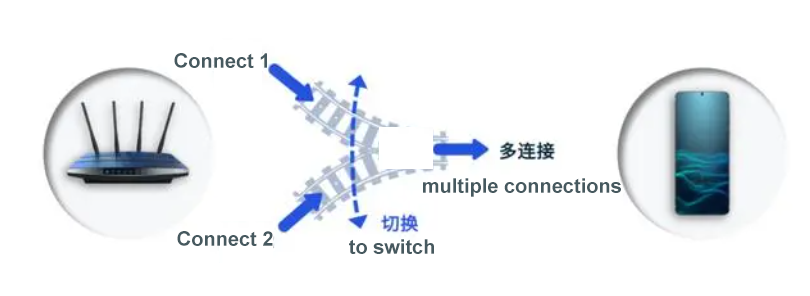
Wi-Fi 7 is the upcoming next-generation Wi-Fi standard, also known as IEEE 802.11be or Extremely High Throughput (Extremely High Throughput), which is 4.8 times the highest speed of Wi-Fi 6 at 9.6Gbps. As the "successor" of Wi-Fi 6, Wi-Fi 7 is worthy of its name.

Compared with Wi-Fi 6, WiFi 7 will introduce CMU-MIMO technology to support up to 16 data streams, 8 lanes to 16 lanes, and a proper interstellar highway. Secondly, in addition to supporting the traditional 2.4GHz and 5GHz frequency bands, WiFi 7 will also support the 6GHz frequency band, and the three frequency bands can work simultaneously.
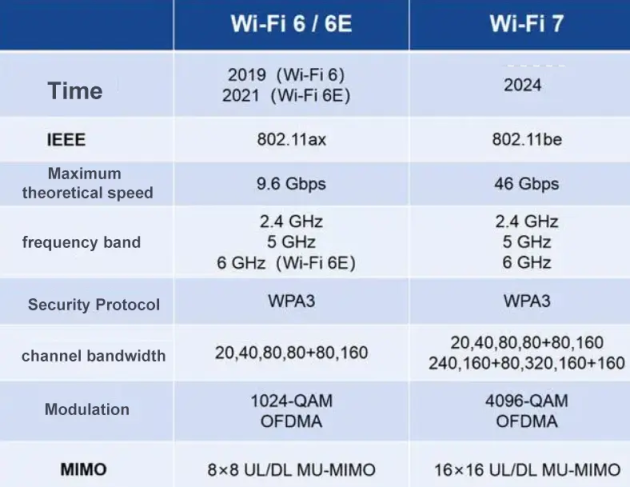
The difference between WiFi 6 and WiFi 7
The two are mainly different from the IEEE standard, transmission rate, bandwidth, modulation method and MIMO
1. According to the IEEE standard, wifi7 uses 802.11be. And wifi6 uses 802.11ax.
2. In terms of maximum transmission rate, wifi7 has a rate of 30Gbps, which is a huge improvement compared to 9.6Gpbs of wifi6.
3. In terms of bandwidth, wifi7 can reach up to 320MHz, which is twice the size of wifi6 up to 160MHz.
4. In terms of modulation, the 4096-QAM of wifi7 can adapt to stronger transmission changes than the 1024-QAM of wifi6.
5. In terms of MIMO, wifi7 has been increased from 8x8 of wifi6 to 16x16, which will be able to support signal interconnection of more devices and base stations.
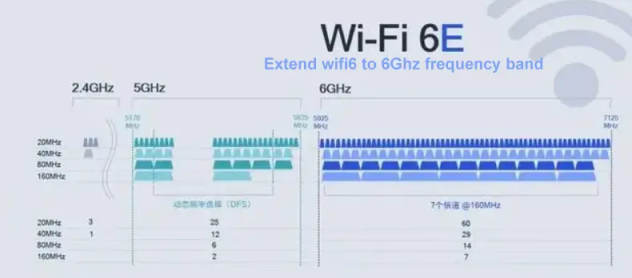
Wi-Fi 7 aims to increase WLAN throughput to 30 Gbps with guaranteed low-latency access. To achieve this goal, the standard defines modifications to the physical layer (PHY) and the MAC layer. Compared with Wi-Fi 6, Wi-Fi 7 brings the following technological innovations:
Bandwidth up to 320 MHz: The 2.4 GHz and 5 GHz bands are restricted and congested unlicensed spectrum. Existing Wi-Fi networks inevitably suffer from low quality of service (QoS) when running emerging applications such as VR/AR. To achieve a maximum throughput of 30 Gbps, Wi-Fi 7 will support the 6 GHz band and expand new bandwidth modes, including continuous 240 MHz, non-contiguous 160+80 MHz, continuous 320 MHz, and non-contiguous 160+ 160 MHz.
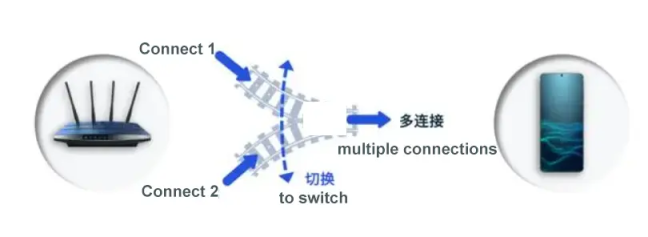
Multi-RU: In Wi-Fi 6, each user can only send or receive frames on the RU allocated to them, which greatly limits the flexibility of spectrum resource scheduling. To solve this problem and further improve spectrum efficiency, Wi-Fi 7 defines a mechanism that can allocate multiple RUs to a single user. In order to balance implementation complexity and spectrum utilization, standard specifications impose certain restrictions on RU combinations. That is, small RUs (containing less than 242 tones) can only be combined with small RUs, and large RUs (containing greater than or equal to 242 tones) can only be combined with large RUs. Small RUs and large RUs can be used in combination.
Higher order 4096-QAM: The highest order modulation supported by Wi-Fi 6 is 1024-QAM, which allows each modulation signal to carry up to 10 bits. To further increase the rate, Wi-Fi 7 introduces 4096-QAM, which enables each modulated signal to carry 12 bits. Under the same encoding, 4096-QAM in Wi-Fi 7 can achieve a 20% rate increase over 1024-QAM in Wi-Fi 6.
Multi-link mechanism: In order to effectively utilize all available spectrum resources, the industry urgently needs to introduce new spectrum management, coordination and transmission mechanisms in the 2.4 GHz, 5 GHz and 6 GHz frequency bands. TGbe defines multi-link aggregation technology, including MAC architecture for enhanced multi-link aggregation, multi-link channel access and multi-link transmission.
More data streams and enhanced MIMO: Wi-Fi 7 increases the number of spatial streams from 8 to 16, more than double the theoretical physical transmission rate of Wi-Fi 6. With the increased data flow, Wi-Fi 7 supports distributed MIMO. That is, multiple access points can provide 16 data streams at the same time, which means that multiple APs need to coordinate with each other.
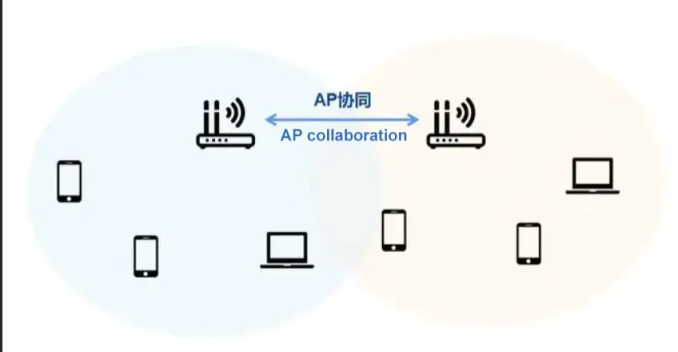
Multi-AP coordination: In the current 802.11 protocol framework, there is not much coordination between APs. Common WLAN features, such as automatic radio calibration and smart roaming, are vendor-defined features. Multi-AP coordination aims to optimize channel selection and adjust the load among APs to achieve efficient utilization and balanced allocation of wireless resources. Coordinated scheduling among multiple APs in Wi-Fi 7 includes inter-cell coordinated planning in time and frequency domains, inter-cell interference coordination, and distributed MIMO. In this way, the interference between APs can be reduced, and the utilization rate of air interface resources can be greatly improved. Multi-AP coordination can be achieved through a variety of methods, such as Coordinated Orthogonal Frequency Division Multiple Access (C-OFDMA), Coordinated Spatial Multiplexing (CSR), and Coordinated Beamforming (CBF).











评论